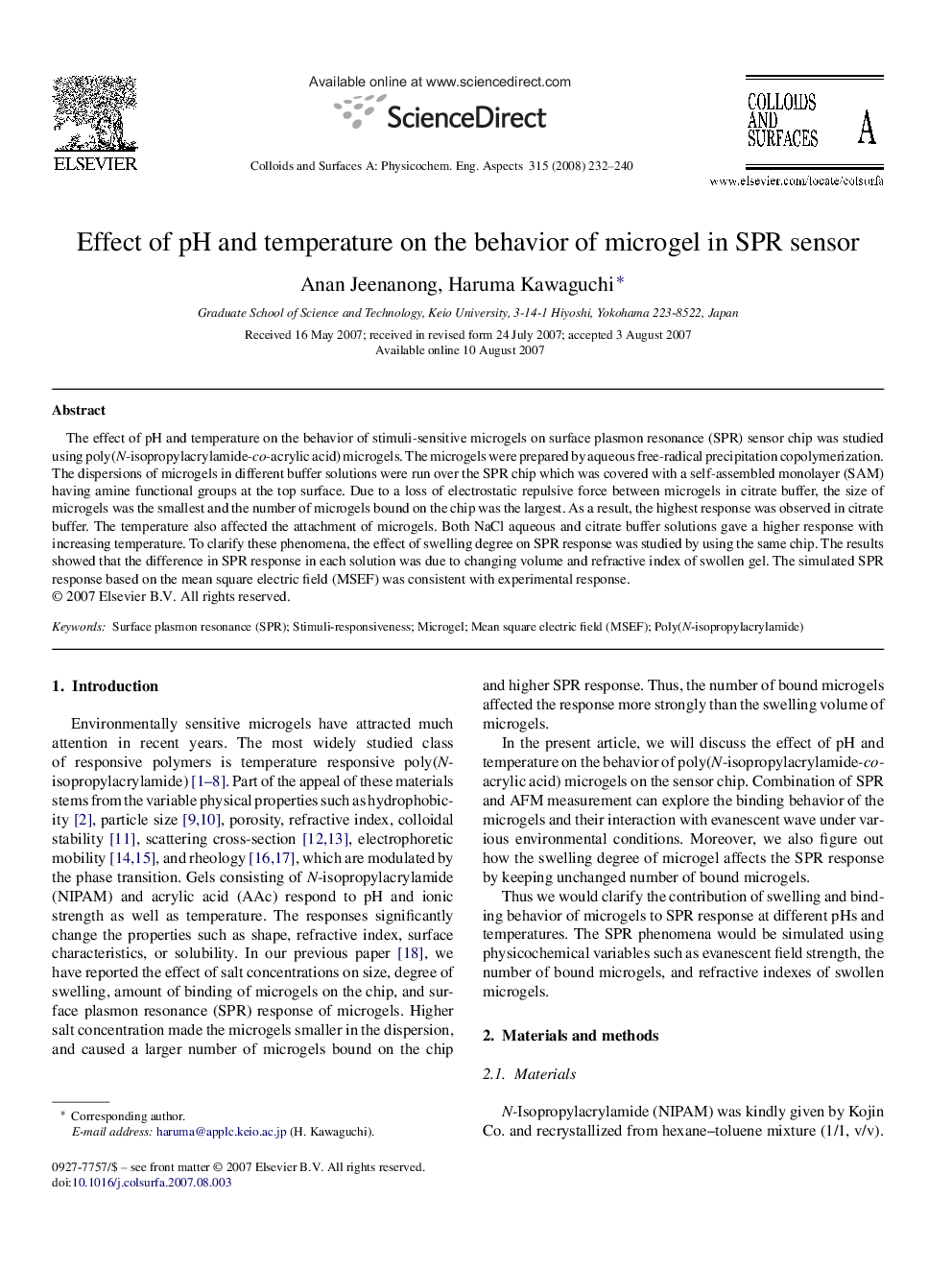| Article ID | Journal | Published Year | Pages | File Type |
|---|---|---|---|---|
| 597164 | Colloids and Surfaces A: Physicochemical and Engineering Aspects | 2008 | 9 Pages |
The effect of pH and temperature on the behavior of stimuli-sensitive microgels on surface plasmon resonance (SPR) sensor chip was studied using poly(N-isopropylacrylamide-co-acrylic acid) microgels. The microgels were prepared by aqueous free-radical precipitation copolymerization. The dispersions of microgels in different buffer solutions were run over the SPR chip which was covered with a self-assembled monolayer (SAM) having amine functional groups at the top surface. Due to a loss of electrostatic repulsive force between microgels in citrate buffer, the size of microgels was the smallest and the number of microgels bound on the chip was the largest. As a result, the highest response was observed in citrate buffer. The temperature also affected the attachment of microgels. Both NaCl aqueous and citrate buffer solutions gave a higher response with increasing temperature. To clarify these phenomena, the effect of swelling degree on SPR response was studied by using the same chip. The results showed that the difference in SPR response in each solution was due to changing volume and refractive index of swollen gel. The simulated SPR response based on the mean square electric field (MSEF) was consistent with experimental response.
